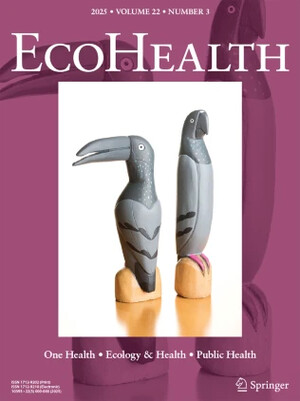
Current and potential use of animal disease data by stakeholders in the global south and north
Abstract
What cannot be measured will not be managed. The Global Burden of Animal Diseases (GBADs) will generate information on animal disease burdens by species, production system, type and gender of farmer and consumer, geographical region, and time period. To understand the demand for burden of animal disease (BAD) data and how end-users might benefit from this, we reviewed the literature on animal diseases prioritisation processes (ADPP) and conducted a survey of BAD information users. The survey covered their current use of data and prioritizations as well as their needs for different, more, and better information. We identified representative (geography, sector, species) BAD experts from the authors’ networks and publicly available documents and e-mailed 1485 experts. Of 791 experts successfully contacted, 271 responded (34% response rate), and 185 complete and valid responses were obtained. Most respondents came from the public sector followed by academia/research, and most were affiliated to institutions in low- and middle-income countries (LMICs). Of the six ADPPs commonly featured in literature, only three were recognised by more than 40% of experts. An additional 23 ADPPs were used. Awareness of ADDPs varied significantly by respondents. Respondents ranked animal disease priorities. We used exploded logit to combine first, second and third disease priorities to better understand prioritization and their determinants. Expert priorities differed significantly from priorities identified by the ADDPs, and also from the priorities stated veterinary services as reported in a survey for a World Organisation of Animal Health (WOAH) technical item.
Respondents identified 15 different uses of BAD data. The most common use was presenting evidence (publications, official reports, followed by disease management, policy development and proposal writing). Few used disease data for prioritization or resource allocation, fewer routinely used economic data for decision making, and less than half were aware of the use of decision support tools (DSTs). Nearly all respondents considered current BAD metrics inadequate, most considered animal health information insufficiently available and not evidence-based, and most expressed concerns that decision-making processes related to animal health lacked transparency and fairness. Cluster analysis suggested three clusters of BAD users and will inform DSTs to help them better meet their specific objectives. We conclude that there is a lack of satisfaction with current BAD information, and with existing ADDPs, contributing to sub-optimal decision making. Improved BAD data would have multiple uses by different stakeholders leading to better evidenced decisions and policies; moreover, clients will need support (including DSTs) to optimally use BAD information.
Citation
Grace, D., Amenu, K., Daborn, C.J., Knight-Jones, T., Huntington, B., Young, S., Poole, J. and Rushton, J. 2024. Current and potential use of animal disease data by stakeholders in the global south and north. Preventive Veterinary Medicine 226: 106189.









